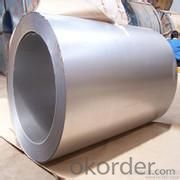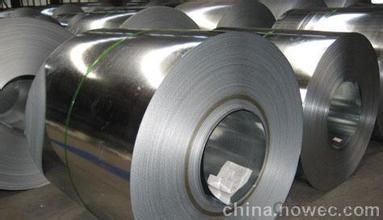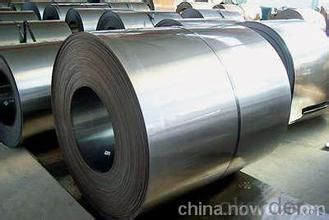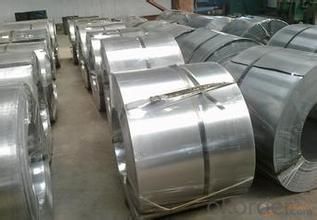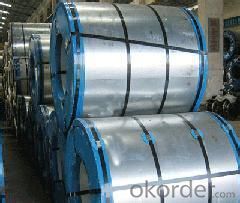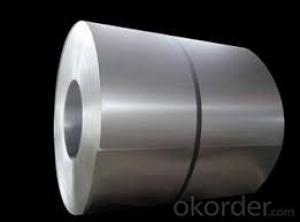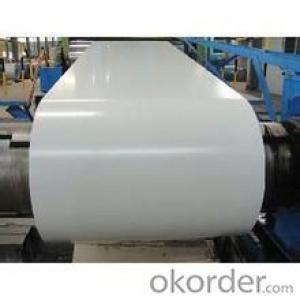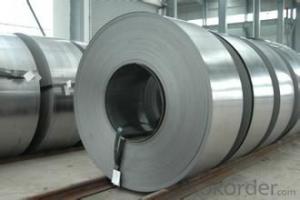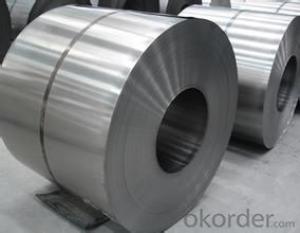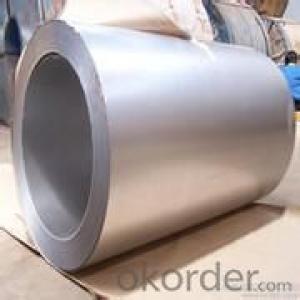excellent cold rolled steel Coil / Sheet -SPCE
- Loading Port:
- China main port
- Payment Terms:
- TT OR LC
- Min Order Qty:
- 30 m.t.
- Supply Capability:
- 5000000 m.t./month
OKorder Service Pledge
OKorder Financial Service
You Might Also Like
Specification:
Thickness: 0.4-2.0mm
2. Width: 900-1250mm
3. Inner Diameter: 508mm
4. Weight of Steel Coil: 3-15MT
5. Heat Treatment: Annealed
6. Margin Status: EC & EM
7. Surface Quality: FB&FC
8. Surface Status: SB & SD
9. Surface Treatment: Oiling
Main Features:
1. Commercial quality suitable for bending fabrication and simple forming; this is the type in greatest demand.
2. Drawing quality second only to that of SPCEN. Excellent uniformity.
3. Deep-drawing quality.With metallurgically controlled grain size, it retains its beautiful finish even after being deep-drawn.
4. Extra-low-carbon steel sheets with highest workability
Application:
1. Refrigerators, cabinets, power distribution baords and drums.
2. Automobile floor and roof panels.
3. Automobile fenders and quarter panels
4. Automobile fenders and quarter panels
Images:
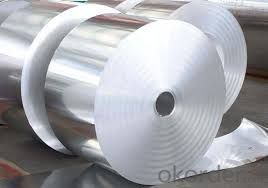
Quality of the goods could be guaranteed. The finished product has a variety of excellent capabilities, such as continuous rolling, degreasing, annealing, skin pass, slitting and cut to length line etc. Along with it many rocessing capability and smooth, flat surface. It’s widely used in outdoor and interior decoration, furnishing
- Q: How do steel coils contribute to the construction sector?
- Steel coils contribute to the construction sector in several ways. Firstly, they are used to manufacture structural components such as beams, columns, and steel frames, which provide strength and support to buildings and infrastructure. Secondly, steel coils are used to produce reinforcement bars that are embedded in concrete, enhancing its tensile strength and durability. Additionally, steel coils are utilized in the construction of bridges, pipelines, and other large-scale projects that require robust and long-lasting materials. Overall, steel coils play a vital role in the construction sector by providing the necessary materials for sturdy and resilient structures.
- Q: What are the dimensions of a steel coil?
- The dimensions of a steel coil can vary depending on several factors such as the intended use, manufacturer specifications, and industry standards. However, common dimensions for steel coils typically include variations in width, thickness, and weight.
- Q: What are the different types of steel coil coatings for heat resistance?
- Heat resistance is achieved through the use of different types of steel coil coatings. These coatings are designed specifically to safeguard the steel surface, preventing it from deteriorating or oxidizing under high temperatures. Organic coatings, such as epoxy, polyester, or polyurethane, are commonly used. They form a protective barrier against heat and prevent the steel from corroding or oxidizing. Organic coatings are typically employed in situations where moderate heat resistance is necessary. Another option is inorganic coatings, made from ceramic or metallic materials. These coatings offer excellent heat resistance and can endure extremely high temperatures. Industries like automotive, aerospace, and power generation frequently utilize inorganic coatings, as their components are exposed to intense heat. Specialized coatings are also available to meet specific heat resistance requirements. Silicone coatings, for instance, exhibit exceptional heat resistance and can withstand temperatures reaching 600°C (1112°F). They find common use in applications like exhaust systems, ovens, and industrial furnaces. Some steel coil coatings may also incorporate additives or fillers to enhance their heat resistance properties. These additions improve the coating's ability to withstand high temperatures and provide superior protection against heat-related issues. In conclusion, a range of steel coil coatings is available for heat resistance, including organic coatings, inorganic coatings, and specialized coatings. The choice of coating depends on the specific heat resistance requirements of the application. Factors such as temperature range, duration of exposure, and environmental conditions must be taken into account when selecting the appropriate coating.
- Q: Can steel coils be coated with holographic patterns?
- Yes, steel coils can be coated with holographic patterns. This coating process involves applying a thin layer of holographic material onto the surface of the steel coils, creating a visually striking and distinctive holographic pattern.
- Q: What are the dimensions of steel coils used in the agricultural structure industry?
- The dimensions of steel coils used in the agricultural structure industry can vary depending on the specific application and requirements. However, commonly used dimensions for steel coils in this industry range from 0.5mm to 3mm in thickness, and from 600mm to 1500mm in width. The length of the coils can also vary, but typically ranges from 1000mm to 3000mm. These dimensions allow for flexibility in the construction of agricultural structures such as barns, sheds, and storage facilities, while providing sufficient strength and durability. It is important to note that specific dimensions may vary depending on the manufacturer and the specific needs of the agricultural project.
- Q: How are steel coils used in the production of electrical wiring?
- Steel coils are used in the production of electrical wiring as a core material for the conductors. The steel coils are typically shaped into a cylindrical form and coated with an insulating material. This helps in providing structural support to the wiring and also enhances its conductivity and durability.
- Q: Can steel coils be customized in terms of size and thickness?
- Yes, steel coils can be customized in terms of size and thickness. Manufacturers have the capability to produce steel coils in various sizes and thicknesses to meet the specific requirements of different industries and applications.
- Q: What are the different methods of coil cutting for steel coils?
- There are several methods of coil cutting for steel coils, including slitting, shearing, and laser cutting. Slitting involves passing the coil through a set of circular blades to create multiple narrower strips. Shearing utilizes a straight blade to cut the coil into desired lengths. Laser cutting involves using a high-powered laser beam to precisely cut through the coil. Each method has its own advantages and is chosen based on the specific requirements and preferences of the manufacturer or end-user.
- Q: How are steel coils inspected for impact resistance?
- Steel coils are typically inspected for impact resistance using various methods to ensure their durability and ability to withstand external forces. One common method is the drop test, where a steel coil is dropped from a specified height onto a hard surface. This test simulates the impact that the coil may encounter during transportation or handling. During the drop test, the coil is visually inspected for any visible signs of damage, such as dents, cracks, or deformations. Additionally, the coil may undergo further examinations, such as ultrasonic testing or magnetic particle inspection, to detect any hidden internal defects that could compromise its impact resistance. Another method used to inspect steel coils for impact resistance is the pendulum test. In this test, a pendulum with a known weight and height is swung and impacts the coil's surface. The energy absorbed by the coil during the impact is measured, and this data is used to evaluate its resistance to impact. Furthermore, steel coils may undergo laboratory tests, such as Charpy impact testing, to determine their resistance to sudden impacts. This test involves striking a notched sample of the coil with a pendulum hammer, measuring the amount of energy absorbed by the sample, and evaluating its impact strength. Overall, a combination of drop tests, visual inspections, non-destructive testing methods, pendulum tests, and laboratory tests are used to inspect steel coils for impact resistance. These inspections ensure that the coils meet the required standards and can withstand the potential challenges they may encounter during transportation, storage, and use.
- Q: How are steel coils used in automotive manufacturing?
- Steel coils are used in automotive manufacturing to produce various components and parts such as body panels, chassis, doors, and other structural parts. The coils are processed through different techniques like cutting, stamping, and welding to shape them into the desired form. This allows for the production of strong and durable automotive parts, ensuring the safety and reliability of vehicles.
Send your message to us
excellent cold rolled steel Coil / Sheet -SPCE
- Loading Port:
- China main port
- Payment Terms:
- TT OR LC
- Min Order Qty:
- 30 m.t.
- Supply Capability:
- 5000000 m.t./month
OKorder Service Pledge
OKorder Financial Service
Similar products
Hot products
Hot Searches
Related keywords





